Learn how to grow vibrant Gomphrena (Globe Amaranth) with expert tips on planting, care, and maintenance. Discover why this drought-tolerant annual is perfect for gardens and cut flower arrangements.
Gomphrena, commonly known as Globe Amaranth, is a low-maintenance annual flower that produces vibrant, long-lasting blooms in shades of purple, pink, white, and orange. These plants thrive in full sun, prefer well-draining soil, and are extremely drought-tolerant, making them perfect for both novice and experienced gardeners.
As a flower farmer with over 15 years of experience growing Gomphrena, I’m excited to share my knowledge about this delightful plant. Let me guide you through everything you need to know to successfully grow and enjoy these colorful, globe-shaped blooms in your garden.
Quick Facts About Gomphrena
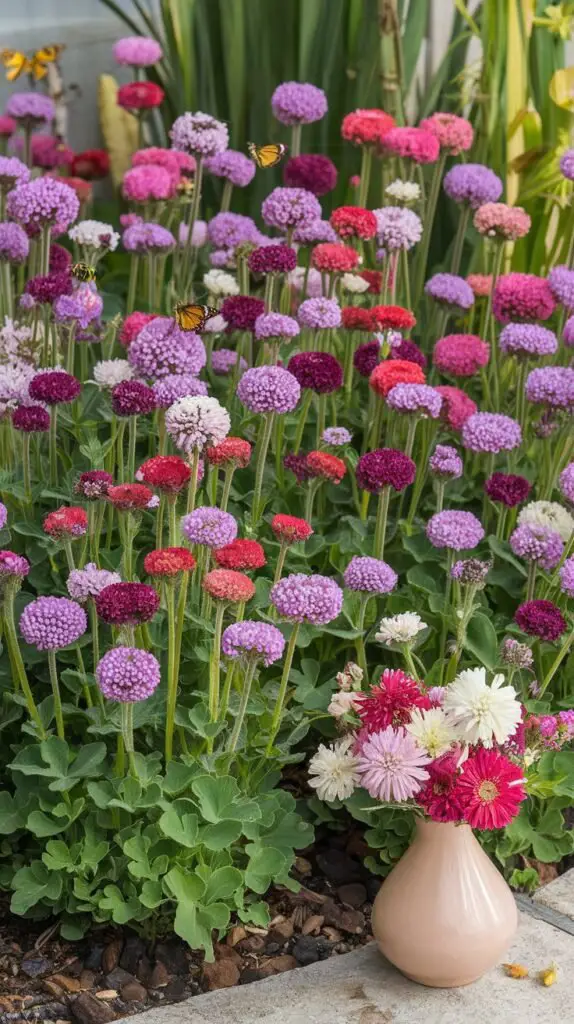
- Scientific Name: Gomphrena globosa
- Plant Type: Annual flower
- Height: 1-2 feet tall
- Bloom Time: Summer to frost
- USDA Hardiness Zones: 2-11 (Check your zone on the USDA Plant Hardiness Zone Map)
Why Grow Gomphrena?
Globe Amaranth offers numerous benefits for your garden:
- Drought-tolerant and heat-resistant
- Attracts pollinators like butterflies and bees
- Excellent for cut flowers and dried arrangements
- Disease and pest-resistant
- Long-lasting blooms
How to Plant Gomphrena
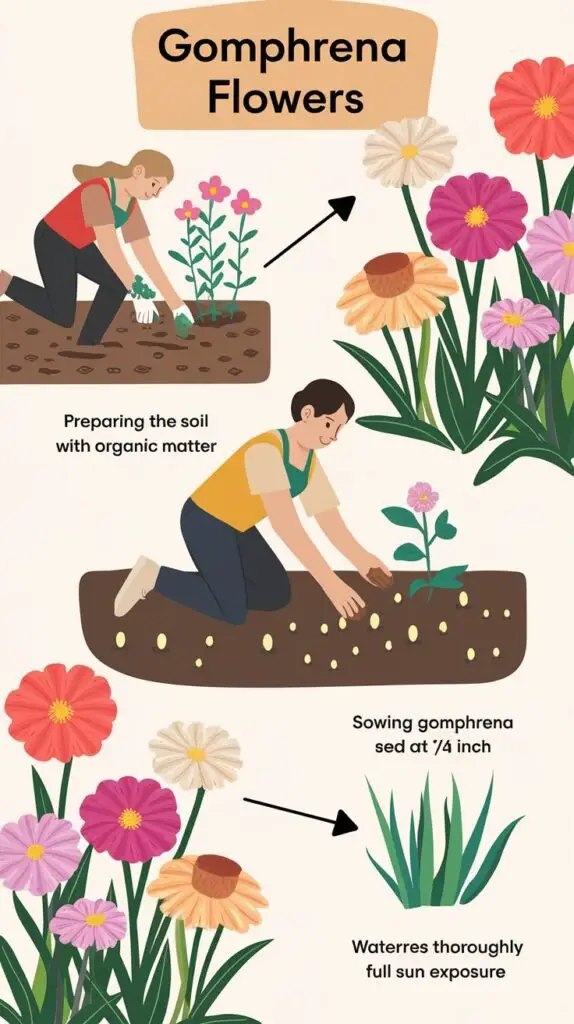
Starting from Seeds
- Timing: Start seeds indoors 6-8 weeks before the last frost date
- Soil Temperature: Maintain 70-75°F (21-24°C) for optimal germination
- Planting Depth: Sow seeds 1/4 inch deep
- Germination: Expect seedlings in 7-14 days
For more detailed seed starting guidelines, the National Garden Bureau offers excellent resources for beginners.
Transplanting Outdoors
- When: After all danger of frost has passed
- Spacing: Plant 12-18 inches apart
- Soil Requirements: Well-draining, slightly acidic to neutral pH (6.1-7.0)
- Sun Exposure: Full sun (6-8 hours daily)
Care and Maintenance
Watering
- Water deeply but infrequently
- Allow soil to dry between waterings
- Pro tip: Mulch around plants to retain moisture and suppress weeds
The American Horticultural Society recommends checking soil moisture levels regularly using the finger test – insert your finger up to the second knuckle; if it feels dry, it’s time to water.
Fertilizing
- Light feeder – doesn’t require much fertilization
- Apply balanced, slow- release fertilizer once at planting
- Avoid high- nitrogen fertilizers which promote foliage over blooms
For organic gardening tips, check out the Cooperative Extension System‘s resources on natural fertilizers.
Pruning and Deadheading
Regular deadheading encourages continuous blooming throughout the season. Simply:
- Remove spent blooms at the stem base
- Trim back leggy growth to promote bushiness
- Harvest flowers for arrangements when fully open
Common Problems and Solutions
Pest Management
Gomphrena is relatively pest-resistant, but watch for:
- Aphids: Treat with insecticidal soap or neem oil
- Spider Mites: Increase humidity and use miticides if necessary
For eco-friendly pest control methods, visit the Xerces Society website.
Disease Prevention
- Root Rot: Avoid overwatering and ensure good drainage
- Powdery Mildew: Provide adequate air circulation between plants
Harvesting and Using Gomphrena
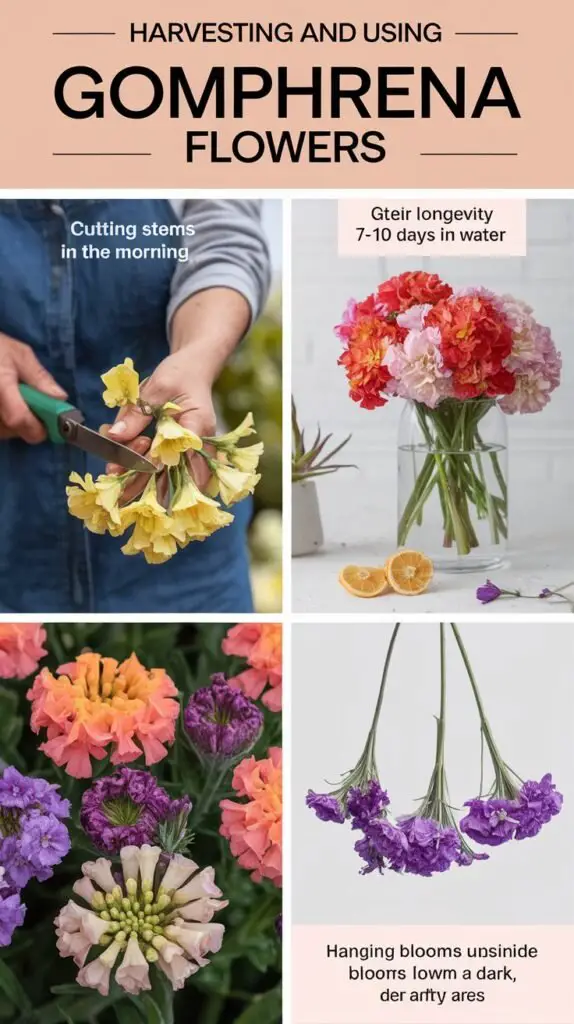
For Fresh Arrangements
- Cut stems in the morning when flowers are fully open
- Place immediately in water
- Flowers last 7-10 days in vase
For professional floral design tips, check out the Society of American Florists resources.
For Dried Flowers
- Harvest when blooms are fully developed
- Hang upside down in a dark, dry area
- Allow 2-3 weeks for complete drying
Popular Varieties to Try
- Strawberry Fields: Vibrant red blooms
- Ping Pong Purple: Deep purple, perfectly round flowers
- QIS White: Pure white blooms, excellent for wedding arrangements
- Fireworks: Pink and yellow bi-color blooms
Find unique varieties through the All-America Selections winners list.
Companion Planting
Gomphrena pairs well with:
- Zinnias
- Marigolds
- Salvias
- Celosia
Learn more about companion planting through the Sustainable Agriculture Research & Education program.
Winter Care and Next Season
- Annual plant: Dies after first frost
- Save seeds for next year:
- Allow some blooms to dry on plant
- Collect seeds when heads turn brown
- Store in cool, dry place
For advanced seed saving techniques, visit Seed Savers Exchange.
Remember, gardening is about experimentation and learning from experience. Don’t be afraid to try different techniques and varieties to find what works best in your specific garden environment. Happy growing!
For more gardening tips and plant care guides, visit usagardenhub.com.

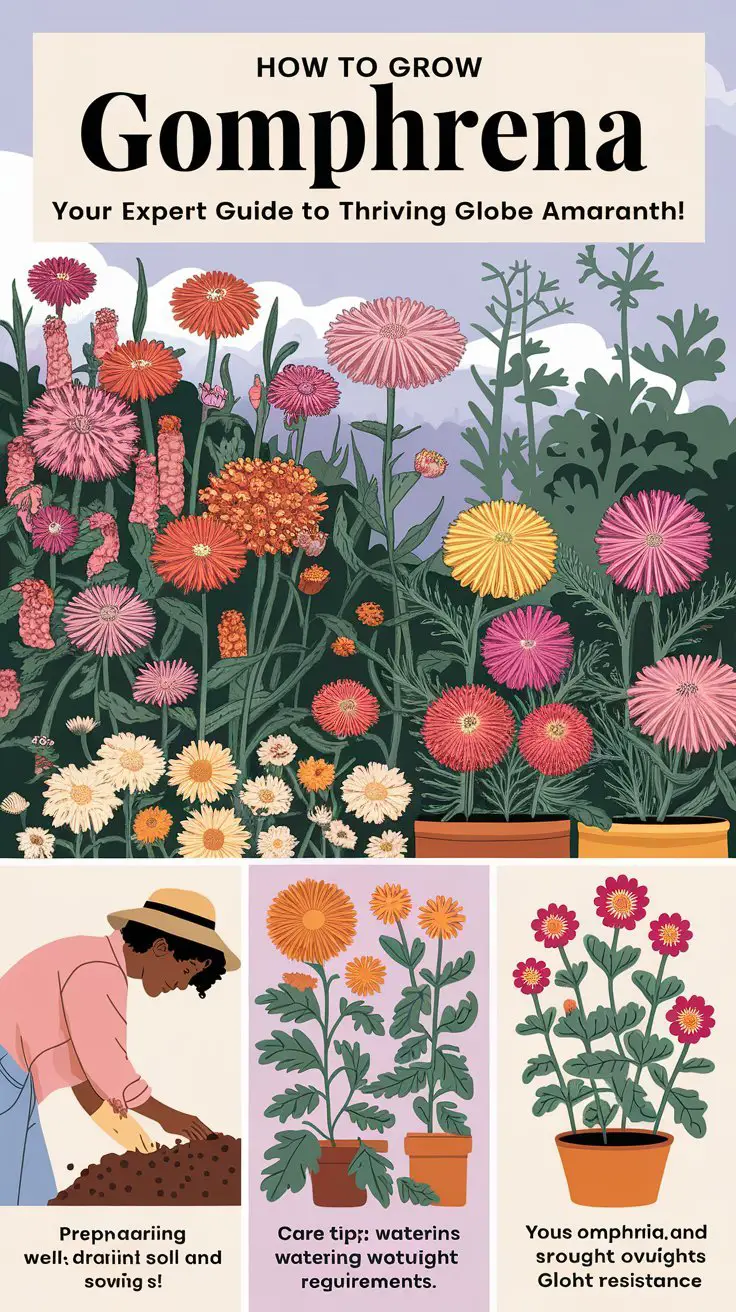
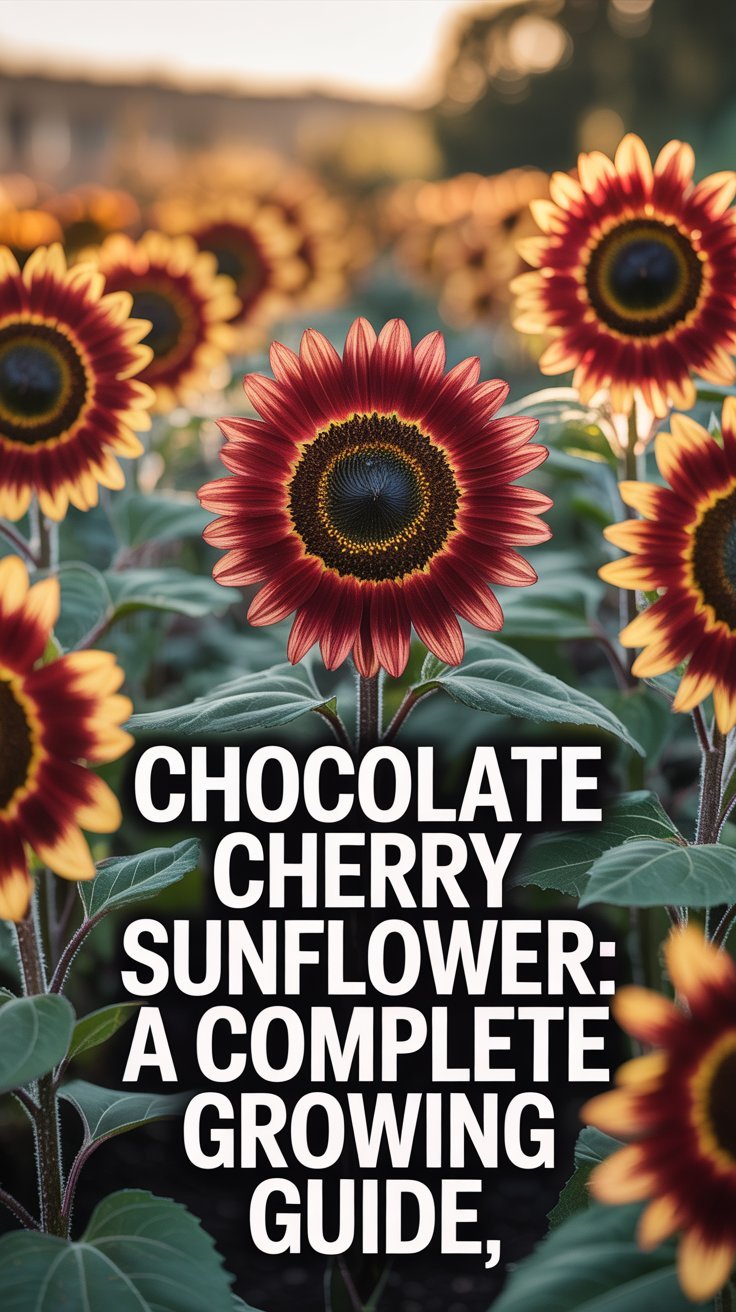
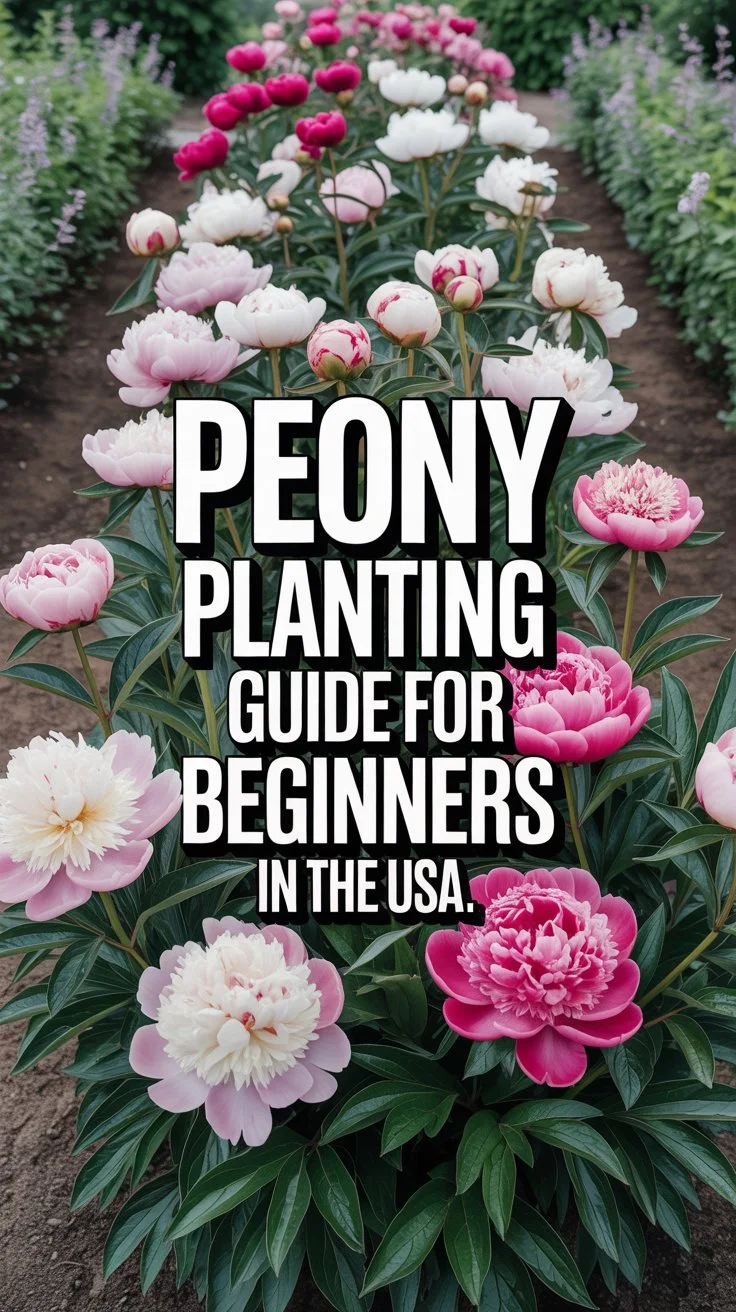
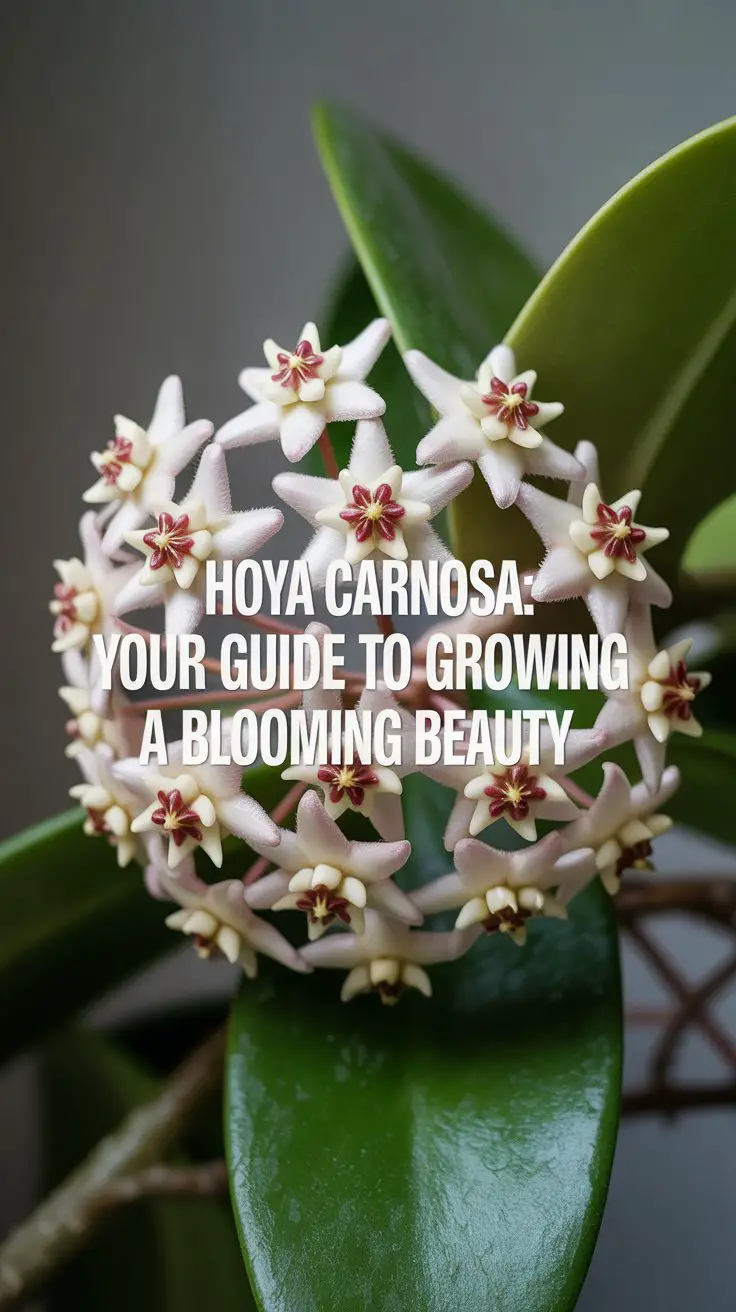
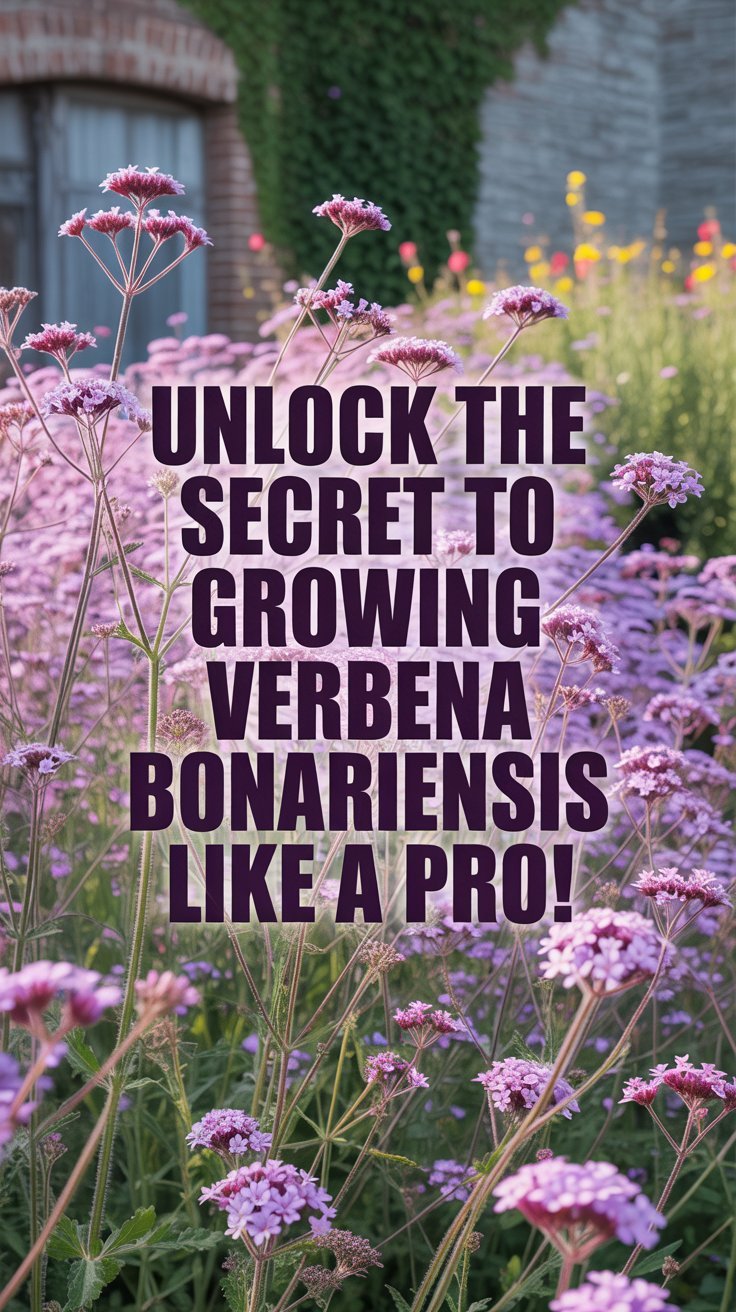
One thought on “How to Grow Gomphrena (Globe Amaranth): Expert Guide”